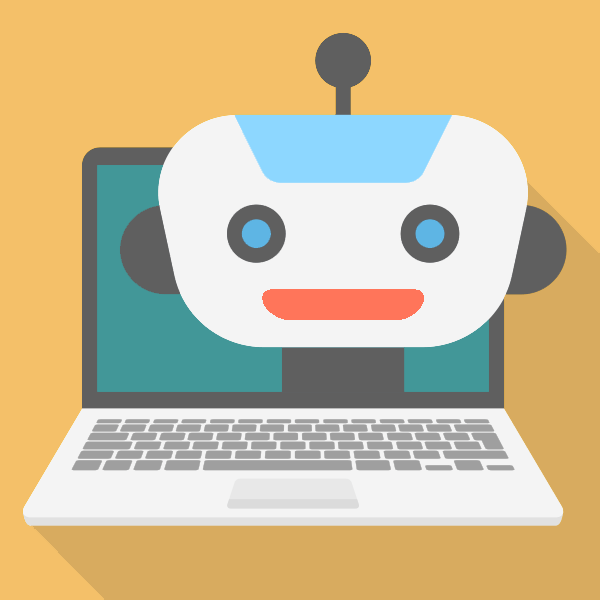“Where does he get those wonderful toys?” That famous line snarled by the Joker after the Caped Crusader after he rescues Vicki Vale using a fancy zipline gun in 1989’s Batman movie always comes to mind whenever one of our clients asks about using free or low-cost AI tools for marketing.
Doesn’t it feel like new tools that promise to change how you do marketing are being released every other day? There are so many open-source solutions out there it’s hard to keep up.
We live in an era where marketers have so many “wonderful toys” for writing helpful and rank-worthy content and creating fresh images. With all these different options, it’s unsurprising that savvy marketers want a little clarity about which artificial intelligence services are worth their attention.
I’m interested, too.
I might be a Luddite in some ways (for example, I totally detest spending money on phone upgrades, so I own an older device), but—boy, oh boy—I love playing with new software! In fact, my curiosity is why I’ve spent so much of my free time over the past year testing the limits of over a dozen AI-powered solutions for creating content.
The results of my nitty-gritty investigative fun follow.
Keep reading to discover what I learned from this hands-on experience, and find out which affordable tools you can actually start using today (with nine examples of how!) to create marketing assets that dazzle your prospective customers.
The best AI marketing tools in 2023
Though the range of options and their capabilities is everchanging, one takeaway stands out so far: knowing how—and when—to use artificial intelligence to support your marketing efforts makes all the difference in how successful you are.
Have you ever asked Alexa or Siri a question and received the strangest answer? Generally speaking, you can expect a similar experience with AI-driven marketing solutions in that you need to know how the tool works (and how to “speak to it”) if you want to get the most usable results.
The most consistently useful AI tools I use almost daily are the ones I’d consider the best. These awesome services include:
- Grammarly
- Headline Studio
- TinyPNG
- CopySmith
- ChatGPT
- DALL-E 2
- Koala
- Sensei GenAI
- Copy.ai
- MidJourney
How to use AI tools for marketing
Artificial intelligence is imperfect. We’re still in the early days of AI-“assisted” marketing content (both copy and images).
Sometimes you’re lucky and get exactly what you were looking for with little effort. Other times, you might type over a dozen prompts—which you think are perfectly clear—for which an AI chatbot serves you progressively terrible results until you give up.

Although most of the tools I mention in this post are considered some of the current “best in class” options, they are all only surefire solutions for completing simple tasks.
That said, by the time 2024 is here, don’t be surprised if everything is entirely different, including which tools are considered the best of the best. AI makes it an exciting time to have the opportunity to work in marketing, that’s for sure!
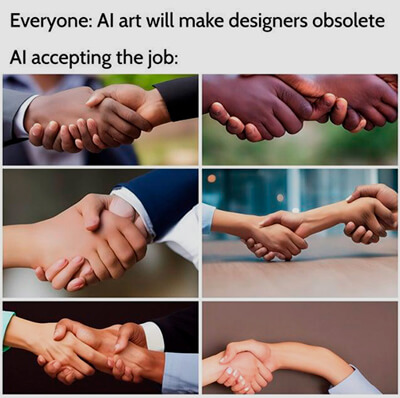
Key benefits of using AI for marketing
It’s disheartening that many thought leaders take hard stances for or against using artificial intelligence to help with marketing. It’s not that black and white. The truth is somewhere in the middle.
Artificial intelligence used for marketing isn’t going to go away. Tools will continue to improve, and—right now—things aren’t failproof, but they also aren’t so bad. In fact, many solutions are great equalizers.
If you have an overworked team, AI marketing tools might be the best way to temporarily handle minor tasks falling through the cracks or help you do everyday tasks a little faster.
Maybe you have a junior editor who is better at cleaning up writing than creating a first draft? Giving them access to an AI content generation service might be a fantastic way to speed up their content creation process (and eliminate some of their blank page stress).
Or, perhaps, you have a subscription to a royalty-free stock service but want to customize your art with outpainting (you know, so your site’s imagery doesn’t look like your competition who is also using stock)?
Assess your team’s needs and consider their skills (and interests). You’ll likely be able to find a few low-risk ways to integrate AI-generated solutions into your processes to make your marketing work easier.
Humans > robots
Today, photographers and painters both find work because the invention of cameras didn’t eliminate artwork from the world.
Think of AI solutions the same way.
Computers aren’t going to eliminate traditional marketing. They will give the best designers and writers/editors more ways to finish their work.
Anyone doing marketing will succeed if they think of artificial intelligence technologies as a partner to support them when …
- designing custom images for a website landing page,
- writing a helpful blog post,
- developing engaging social media content,
- preparing persuasive PPC ad copy,
- refining meta descriptions,
- and more!

Talented humans are still the makers of the best photos and paintings, just as experienced and hardworking creative folks are why some AI-produced marketing assets are more exciting and engaging than others. Artificial intelligence is not a complete replacement for strategic services and creativity you can get from a marketing agency or in-house team.
Sorry, R2-D2 and Johnny 5, but AI isn’t a panacea for every company’s marketing troubles. Artificial intelligence tools have yet to consistently produce stuff that beats good, old-fashioned human innovation and artistry.
The 3 most significant drawbacks of AI marketing tools
The revolution is … NOT now.
It’s coming, but most AI tools aren’t ready to deliver knock-your-socks-off results.
Plus, the cost is still an issue. Yes, some automation solutions are free, but others (including many of those I have found to be the best marketing AI-assisted services) come with a notable price tag.
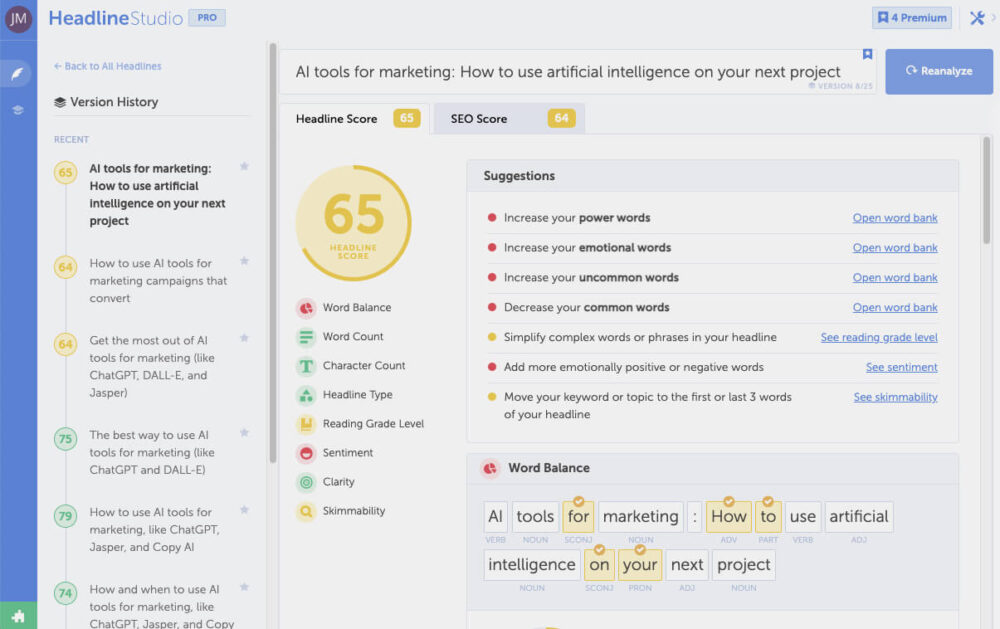
Before investing significant time and money to integrate artificial intelligence solutions into your marketing asset creation process, here are the top two issues you should consider.
Errors, plagiarism, and other quality woes
You know the saying, “Garbage in, garbage out”? That is totally fitting when used to describe AI tools for marketing. And what do I mean by garbage?
AI marketing content issues
Conversions and SEO ranking are just two factors that can be influenced by putting AI-“assisted” content out into the world that hasn’t been vetted for accuracy and refined to match your brand tone.
Here’s a list of the most significant things to watch out for when using artificial intelligence to help you create marketing assets.
- Repetitive (Be prepared to edit because AI writing solutions love to say the same thing repeatedly—and not always even use different words—which can be frustrating and require lots of rewriting to get just right. This affinity for repetition is one reason its copy outputs are quickly flagged and (watch out!) penalized by Google as being AI-generated.)
- Boring (AI-powered content is often dry (think “rejected Mad Libs page” bad), and—in most cases—it also isn’t engaging enough for marketing needs.)
- False (Copywriting chatbots love-love-love to tell fibs. So annoying! Others don’t have subject matter expertise because they use data that doesn’t include contemporary info. Also annoying!)
- Limited expertise (Need some content about something new or esoteric? Most AI marketing writing tools work from a limited database, meaning they can only write what they know. As such, they typically don’t know any present-day information or details about arcane topics.)
- Unoriginal (When you “feed” an AI tool contextual info, don’t be surprised when its chatbot uses the exact words you shared. If you input content from your site (or maybe even from a competitor) as a starting point, an AI marketing bot will likely use your provided info as a source. And, by default, they aren’t great a paraphrasing or retaining the original meaning. Always use a plagiarism checker. That’s a great way to protect yourself when putting together content with help from artificial intelligence.)
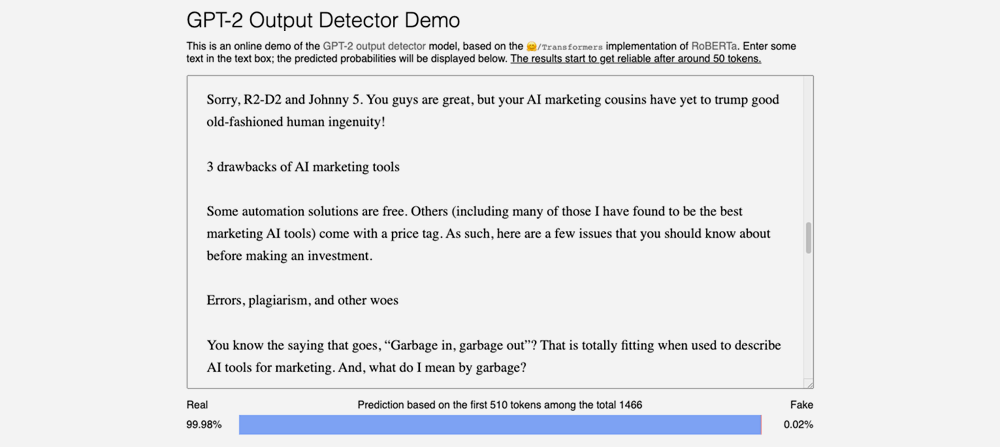
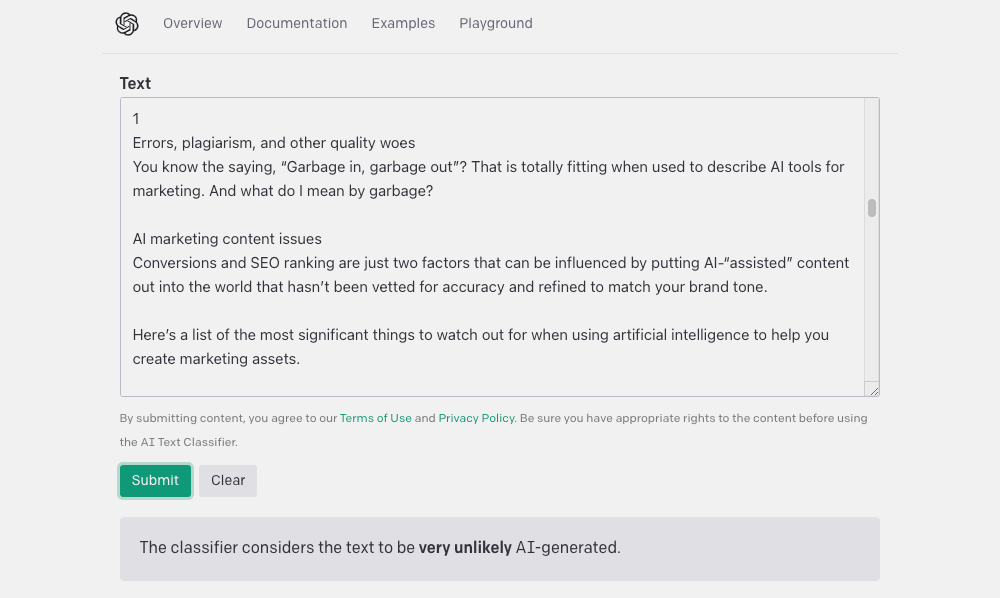
AI marketing imagery problems
Like words written by artificial intelligence solutions, AI chatbots that help you create (and clean up) marketing graphics also have drawbacks.
Here are some specific issues to keep front of mind when using AI art generation tools:
- Limited or low-resolution images (There’s a limit with most AI-driven image and video creation options regarding the size of your output, limiting potential reuse. That might change in the future, but for now, it’s a significant consideration you must remember when using these solutions since your ability to upscale images with other AI tools won’t always be enough.)
- Odd artifacts on graphics (It’s always irritating when you finally get a text-to-image generation tool to render a fabulous image, only to have that picture marred by a faux signature or watermark. Like wonky hands, strange artifacts are another known frustration linked to using artificial intelligence to create original images.
- Offensive outputs (Because humans have bias, so do AI text-to-image generation bots. Be aware when using that you may unintentionally render hypersexualized, gory, and racist graphics. This happens because of the database of images used to train these solutions and create new artwork for users. The developers are aware, but issues still arise regularly.)
Steep learning curves and ongoing hand-holding
Each AI marketing tool works a little differently.
If you pick up new tech tools quickly, adjusting to how one works over another shouldn’t take too much time. However, you’ll still need to treat it like a partner, even once you learn how to use a new artificial intelligence solution.
At this point, I’ve found that no AI technology is smart enough to be completely hands-off. Be prepared to always provide at least a little guidance when using AI tools for marketing.
Unreliability
The free version of ChatGPT is so awesome … when it’s up and running/actually available to use. The AI tool for marketing is stinking popular right now that getting it to work, even as a registered free user, is a game of chance.
If you find it invaluable to get started on writing projects by having it create outlines or summarize technical information, you may want to upgrade to a paid account for a smoother user experience.

When you rely on specific technologies to do your job, downtime hurts. I’ve noticed that many of these newer AI-generation bots—ahem, I’m looking at you, ChatGPT and MidJourney—experience growing pains where their services are inaccessible at the most inconvenient times, which is yet another reason why—at this point in time—free AI solutions aren’t in a place yet where they will replace your more reliable in-house marketing colleagues and skilled agency partners.
If you’re reading this because you’re worried about self-preservation, stay relevant by keeping up with what these tools can do so that you can accurately explain their limitations (and exploit them in ways to make you better at your own job). There’s no shame in using bots to speed up your grunt work so that you can tackle the more thoughtful tasks on your to-do list (especially those that you like doing).
Which marketing tasks are great for AI?
Our clients are used to us recommending some of the following AI-powered tools—like Grammarly, Headline Studio, and TinyPNG. But, even these solutions aren’t 100% perfect every time and require thoughtful usage for good results.
Here are nine ways to use artificial intelligence for generating marketing-related assets that might not yet be on your radar include:
Find hashtags for social media posts
As the firstborn in my family, being bossy comes naturally. So it’s no wonder I love telling writing technologies, like Jasper and ChatGPT, what to do. These AI tools for marketing allow you to “command” them to give you lists and other content on demand. I like to use the information provided by their chatbots to jumpstart specific tasks, like figuring out which hashtags might be best to use to promote something on social media.

Another way to find good hashtags is to use the AI helper bot directly available on Facebook. When you start a new post, type a hashtag that you think would make sense for the content you’re about to share. As you begin to type, its artificial intelligence tool will reveal the search volume for the term you’re thinking about. Plus, it will also tell you about popular related terms.
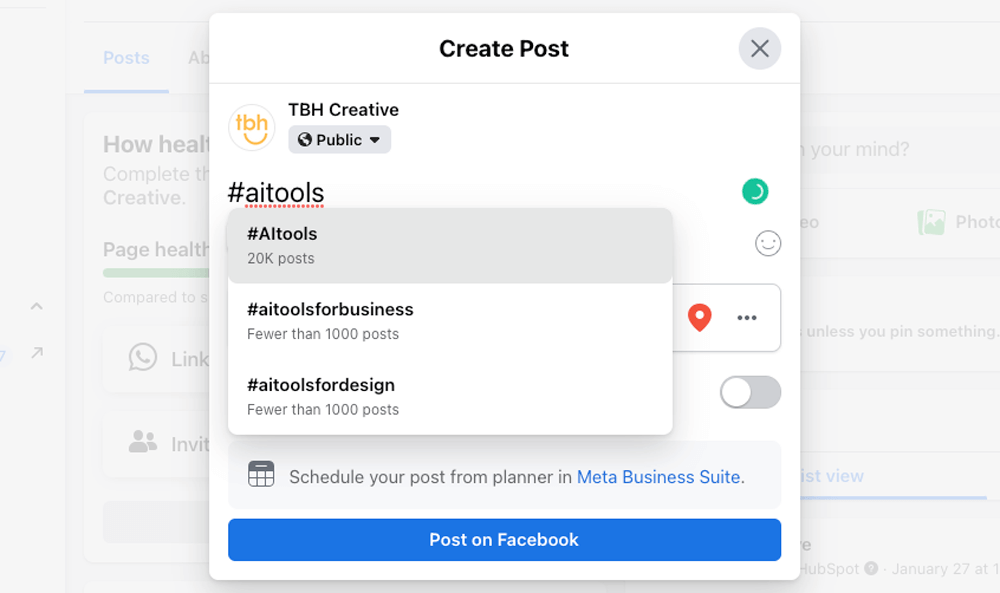
Remove busy backgrounds from photos
Is there anything more annoying than having to clip a complicated image out from the background (especially if the background is detailed or the edges of your image are complex)?
The free Image Background Remover tool from Adobe Express makes light work of this task. It’s not always perfect. The AI art bot, for instance, often gets tripped up by folks with frizzy hair and products with fuzzy shadows. But, even if its first output isn’t perfect, the file you download is typically a great starting point if you need to do further cleanup to create an ideal background-free image.
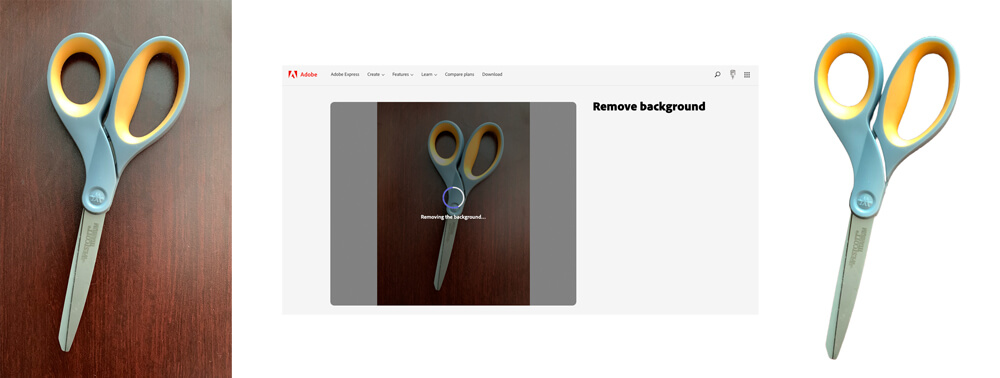
Create a list of pain points
Doing actual persona research is always ideal. Nothing beats real customer feedback. Even if you’ve worked in an industry for ages, there will always be unexpected opportunities to unearth within your company’s niche.
However, sometimes—because of timing or budget—nailing down your target audience’s struggles before beginning a new marketing campaign just doesn’t pan out. That doesn’t mean you can’t set down some key pain points to ensure everyone is on the same page about what matters most to people during their customer journey. AI tools for marketing, like ChatGPT, can help you build an initial list for a basic buyer persona report.
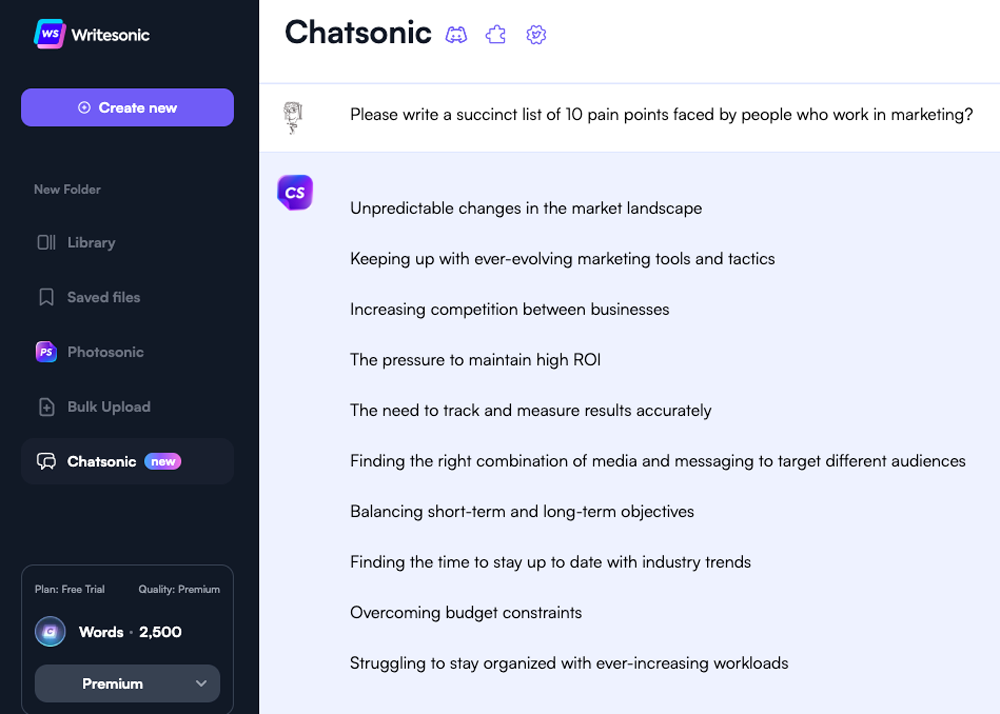
Extend photos with not quite enough background
Expanding the background of an existing graphic is a fine art. It takes real skill. When the work is done poorly, everyone notices.
Right now, most AI tools for marketing tend to produce outputs that look Photoshopped by someone who doesn’t know what they’re doing, but there’s an exception—it can do a great job guessing at architecture! This can prove really helpful, for example, if you need just a bit more of a window in the background of a custom stock image so that it will work nicely in your design.
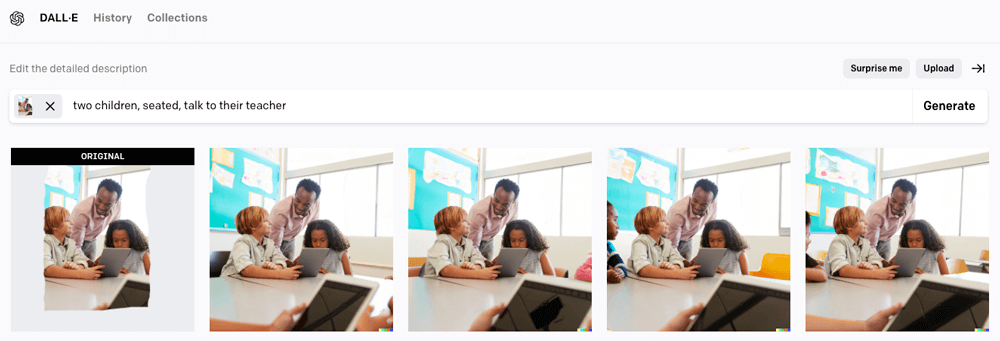
Transcribe audio and video files
Transcription is time-consuming! But, if you have a podcast, including a transcription on your episode detail pages can be a significant SEO boost.
Suppose you’ve been manually transcribing your audio or video podcast episodes (or outsourcing this work to a vendor). In that case, to save time or money with this work, you might want to consider using YouTube to lend a hand.
How? After you have uploaded a multimedia file to YouTube, you can use its automatic captioning AI tool to generate a transcript. This AI tool for marketing sometimes mishears what is said, so your first transcript draft pulled from YouTube will need some fixing before it’s ready to share with the world.
However, don’t forget that you can speed up editing your YouTube-generated transcript using other AI marketing solutions, like spellcheck and Grammarly.
Generate extra CTAs
Since creating content is expensive, it’s no wonder that 94% of marketers repurpose their custom assets. One way to make this process easier is to use an AI tool to help you generate effective CTA variations.
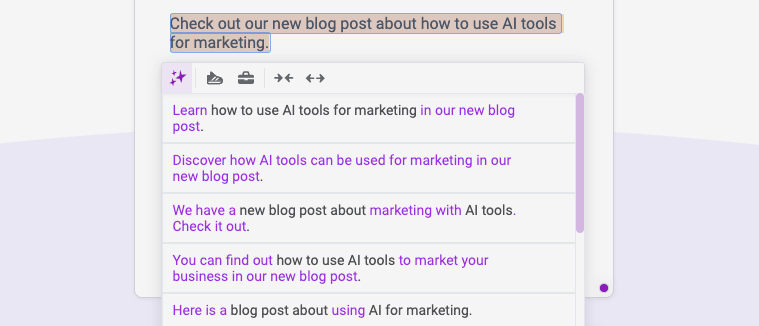
Fix a fuzzy image
AI image enhancers are great tools to use when you have a low-resolution image that you want to make bigger and sharper. As a user, you have a lot of choices, from Remini to Fotor. You can even use Adobe Express’s option for this type of task.
Each offering, though, has different pluses/minuses. After trying about ten AI image enhancement tools, my regular go-to solution has become StickerMule because it’s free, easy to use, and fast. (Plus, it doesn’t hurt that its outputs are always terrific, too).
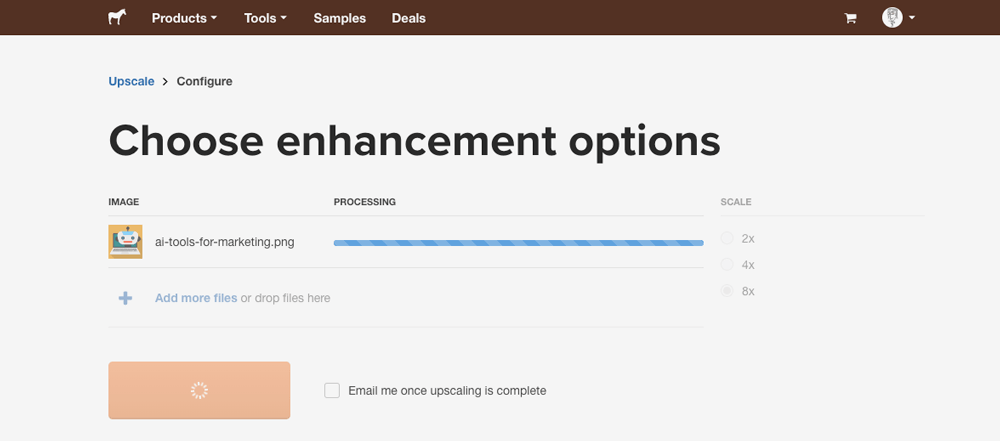
Make your writing clearer
You don’t have to be an English major to write better. Free versions of artificial intelligence solutions like Yoast and Grammarly are good at pointing out when your prose has room for improvement. But, if those AI tools for marketing tell you that you’ve got too much passive voice, didn’t include enough transitions, or used too many complex words, do you always know how to fix those issues?
If your answer is no, try the free Hemingway App.
With it, you can get specific recommendations on what to do to improve the readability of your writing. I think “Papa” Ernest would be proud his last name is the same as such an excellent service.
Handle minor portrait retouching
You can do a lot when it comes to retouching if you have an Adobe Photoshop license. It’s no secret that—on top of manual cleanup—you can use the program’s native Neural Filters—carefully!—to adjust portraits that aren’t quite where you want them to be.
The trouble is that old-fashioned retouching, on top of requiring the retoucher to have an “eye” for what looks natural, can require a lot of time. However, if you need to make just a tiny fix (and do it fast), some AI marketing tools can help you get the job done easily (and … for little or no cost).

Is your marketing to-do list too long?
When you’re feeling overwhelmed, trendy quick fixes are always tempting.
Despite the hype that might have made you think that AI marketing tools can dramatically lighten your load in every type of work, the reality is that even the most promising tools aren’t quite there yet.
On the other hand, working side-by-side with a trusted agency partner truly can make a difference in your work life, especially if you hire an experienced firm that understands what you do, who your customers are, and who can help you build a strategy using tactics to help you meet your marketing goals.
Get started with TBH Creative
Our team knows how to combine all your marketing campaigns and assets to ensure each one converts. We thrive on challenges and love collaboration (with people and AI marketing tools). According to our clients, we’re pretty nice to work with, too. Let’s talk.
